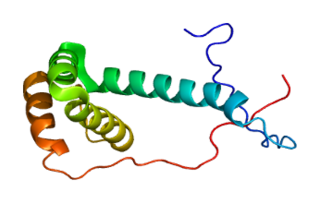| SEPTIN12 | |||||||||||||||||||||||||||||||||||||||||||||||||||
|---|---|---|---|---|---|---|---|---|---|---|---|---|---|---|---|---|---|---|---|---|---|---|---|---|---|---|---|---|---|---|---|---|---|---|---|---|---|---|---|---|---|---|---|---|---|---|---|---|---|---|---|
| Identifiers | |||||||||||||||||||||||||||||||||||||||||||||||||||
| Aliases | SEPTIN12 , SPGF10, septin 12, SEPT12 | ||||||||||||||||||||||||||||||||||||||||||||||||||
| External IDs | OMIM: 611562 MGI: 1918339 HomoloGene: 69435 GeneCards: SEPTIN12 | ||||||||||||||||||||||||||||||||||||||||||||||||||
| |||||||||||||||||||||||||||||||||||||||||||||||||||
| |||||||||||||||||||||||||||||||||||||||||||||||||||
| |||||||||||||||||||||||||||||||||||||||||||||||||||
| |||||||||||||||||||||||||||||||||||||||||||||||||||
| |||||||||||||||||||||||||||||||||||||||||||||||||||
| Wikidata | |||||||||||||||||||||||||||||||||||||||||||||||||||
| |||||||||||||||||||||||||||||||||||||||||||||||||||
Septin 12 is a protein that in humans is encoded by the SEPT12 gene. [5]
| SEPTIN12 | |||||||||||||||||||||||||||||||||||||||||||||||||||
|---|---|---|---|---|---|---|---|---|---|---|---|---|---|---|---|---|---|---|---|---|---|---|---|---|---|---|---|---|---|---|---|---|---|---|---|---|---|---|---|---|---|---|---|---|---|---|---|---|---|---|---|
| Identifiers | |||||||||||||||||||||||||||||||||||||||||||||||||||
| Aliases | SEPTIN12 , SPGF10, septin 12, SEPT12 | ||||||||||||||||||||||||||||||||||||||||||||||||||
| External IDs | OMIM: 611562 MGI: 1918339 HomoloGene: 69435 GeneCards: SEPTIN12 | ||||||||||||||||||||||||||||||||||||||||||||||||||
| |||||||||||||||||||||||||||||||||||||||||||||||||||
| |||||||||||||||||||||||||||||||||||||||||||||||||||
| |||||||||||||||||||||||||||||||||||||||||||||||||||
| |||||||||||||||||||||||||||||||||||||||||||||||||||
| |||||||||||||||||||||||||||||||||||||||||||||||||||
| Wikidata | |||||||||||||||||||||||||||||||||||||||||||||||||||
| |||||||||||||||||||||||||||||||||||||||||||||||||||
Septin 12 is a protein that in humans is encoded by the SEPT12 gene. [5]
This gene encodes a guanine-nucleotide binding protein and member of the septin family of cytoskeletal GTPases. Septins play important roles in cytokinesis, exocytosis, embryonic development, and membrane dynamics. Multiple transcript variants encoding different isoforms have been found for this gene. [5]

Emodin (6-methyl-1,3,8-trihydroxyanthraquinone) is a chemical compound, of the anthraquinone family, that can be isolated from rhubarb, buckthorn, and Japanese knotweed. Emodin is particularly abundant in the roots of the Chinese rhubarb, knotweed and knotgrass as well as Hawaii ‘au‘auko‘i cassia seeds or coffee weed. It is specifically isolated from Rheum palmatum L. It is also produced by many species of fungi, including members of the genera Aspergillus, Pyrenochaeta, and Pestalotiopsis, inter alia. The common name is derived from Rheum emodi, a taxonomic synonym of Rheum australe, and synonyms include emodol, frangula emodin, rheum emodin, 3-methyl-1,6,8-trihydroxyanthraquinone, Schuttgelb, and Persian Berry Lake.

The liver receptor homolog-1 (LRH-1) also known as NR5A2 is a protein that in humans is encoded by the NR5A2 gene. LRH-1 is a member of the nuclear receptor family of intracellular transcription factors.

YY1 is a transcriptional repressor protein in humans that is encoded by the YY1 gene.

LIGHT, also known as tumor necrosis factor superfamily member 14 (TNFSF14), is a secreted protein of the TNF superfamily. It is recognized by herpesvirus entry mediator (HVEM), as well as decoy receptor 3.

Septin 2, also known as SEPT2, is a protein which in humans is encoded by the SEPT2 gene.

Septin-5 is a protein that in humans is encoded by the SEPT5 gene.

Septin-4 is a protein that in humans is encoded by the SEPT4 gene.

Lysine N-methyltransferase 2C (KMT2C) also known as myeloid/lymphoid or mixed-lineage leukemia protein 3 (MLL3) is an enzyme that in humans is encoded by the KMT2C gene.

V-type proton ATPase subunit H is an enzyme that in humans is encoded by the ATP6V1H gene.

Septin-8 is a protein that in humans is encoded by the SEPT8 gene.

Glycine N-methyltransferase is an enzyme that in humans is encoded by the GNMT gene.

Prostasin is a protein that in humans is encoded by the PRSS8 gene.

Hepatitis B virus X-interacting protein is a protein that in humans is encoded by the HBXIP gene.

Protein boule-like is a protein that in humans is encoded by the BOLL gene.

Programmed cell death protein 5 is a protein, originally identified as an apoptosis-accelerating protein, that in humans is encoded by the PDCD5 gene.

Septin-11 is a protein that in humans is encoded by the SEPT11 gene.

Septin-1 is a protein that in humans is encoded by the SEPTIN1 gene. It was renamed from SEPT1 to avoid problems where Microsoft Excel would auto-correct the gene name to the date September 1.

Polypeptide N-acetylgalactosaminyltransferase 14 is an enzyme that in humans is encoded by the GALNT14 gene.

Septin 10 is a protein that in humans is encoded by the SEPT10 gene.

Spondin 2, also known as mindin, is a protein that in humans is encoded by the SPON2 gene.
This article incorporates text from the United States National Library of Medicine, which is in the public domain.